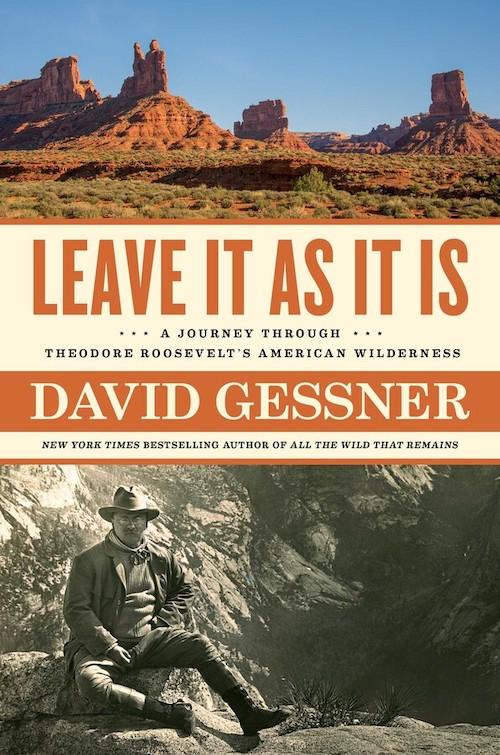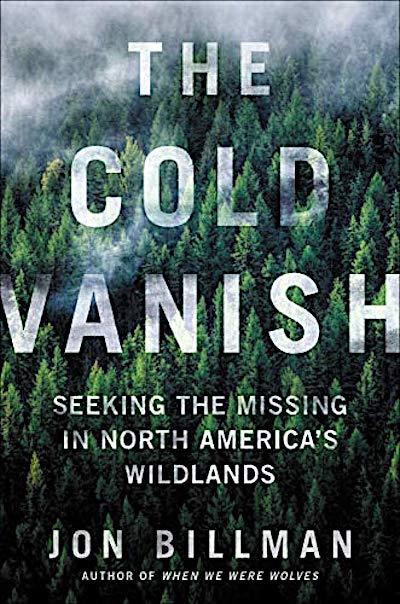The past year brought many book titles to our attention, and most of them we liked. Here's a look back at books worthy of being placed in your personal national parks library. Click on the title to read the review.
Wonders Of Sand And Stone: A History Of Utah's National Parks And Monuments
Frederick Swanson tells the story of the century-long battles between those who would preserve large parts of Utah's spectacular landscape and those who would dedicate them to “multiple use,” principally grazing, mining, dams, and oil and gas development. The story begins early in the history of America’s national parks when Utah’s redrock country was virtually inaccessible except to a few intrepid explorers, prospectors, and reaches to the 21st century conflicts over Bears Ears and Grand Staircase-Escalante national monuments.

Tahoma And Its People: A Natural History Of Mount Rainier National Park
Mount Rainier towers above its surroundings. The 360-degree view from its summit is stunning, encompassing Puget Sound and the Olympic Mountains to the west, Mount Baker far to the north, the Columbia River country to the east, spreading south toward Mount Adams, Mount St. Helens, and Mount Hood down in Oregon. I saw all of this on a perfectly clear summit day and having done so makes me appreciate the approach Jeff Antonelis-Lapp takes in this book.
Scenic Science Of The National Parks, An Explorer’s Guide To Wildlife, Geology And Botany
There are many resources to help you get the most out of your national park adventures. And there are dozens of guidebooks, it seems, that profess to be the authority on visiting the parks. But there’s a book that takes a new approach to visiting the parks, an approach built around a park’s residents – their plants, wildlife, and even geology. Scenic Science of the National Parks, An Explorer’s Guide to Wildlife, Geology and Botany provides information that draws you closer to a park's natural resources, the uniqueness of the different plants and animals, and some of the amazing geological details.
The Nature Of Yosemite: A Visual Journey
Stuck inside during the COVID pandemic? Suffering some cabin fever and dreaming of wild and beautiful places like Yosemite National Park? This book by biologist and photographer Robb Hirsch might help relieve the pain just a little.

The Only Kayak: A Journey Into The Heart Of Alaska
One theme of The Only Kayak is the change that Heacox experienced in Alaska over the quarter century he explored it before writing this book, serving as a ranger in Denali as well as Glacier Bay and ultimately leaving the Park Service, settling in Gustavus, a small community near the mouth of Glacier Bay, and pursuing his writing career. After a quarter century, he observes in his epilog that “If Glacier Bay has taught me anything, it is the willingness to accept a little fear and uncertainty in my life, in all our lives, from childhood to old age. It’s a long and winding road, as Paul McCartney would say, but no worthwhile journey is short, straight, or easy. We talk about how the work is changing,” he continues, “but what we’re really talking about is how we are changing the world. It doesn’t have to be. I’ve yet to see a man improve a tree.
From Bear Dens To The Oval Office
When you're crossing the Colorado River in the middle of winter, wearing snowshoes, it's best not to have the ice give way and drop you into the river. Sheridan Steele can attest to that.
After The Blast: The Ecological Recovery Of Mount St. Helens
As devastating as the Mount St. Helens eruption was in 1980, the rejuvenation of the landscape has been just as riveting. Eric Wagner tells the story of how researchers studied that rejuvenation. Wagner is a science writer with a PhD in biology and a background ideally suited to tell the complex story of how the landscape devastated by the volcanic blast has “recovered” over the past 40 years.
Leave It As It Is: A Journey Through Theodore Roosevelt’s American Wilderness
Leave it as It Is is the most engaging and powerful book about Western public lands that I have read in a long time. David Gessner published a terrific book in 2015 titled All the Wild That Remains: Edward Abbey, Wallace Stegner, and the American West, and I find some Abbey and Stegner in this new book, both in style and content. He traveled the West in search of Abbey and Stegner in that book as he does with Teddy Roosevelt in this one. He looks at all these icons in the context of the modern West with a clear and analytical eye.

National park enthusiasts will likely be familiar with the writing of Terry Tempest Williams. Her previous book The Hour of Land told national park stories as only she, in her lyrical, insightful, and emotional way, can tell them. Erosion is not explicitly about national parks, though some of the essays lament what has happened to Bears Ears and Grand Staircase – Escalante National Monuments. She has already addressed the challenges of many other parks in that earlier work. The 32 pieces in this book, most of them essays, address a “world being torn to pieces,” being eroded, a condition that brings Williams, at times, to heartbreak.
Why Trust Science?
Never in the history of science has asking the question “Why Trust Science?” been more important than in 2020 because science denial in the face of climate change, pandemics, and the loss of biodiversity, among other challenges facing the world, threatens lives and the future of human communities across the globe.
Essay | Revisiting Mountains Without Handrails
Forty years ago, I read Mountains Without Handrails: Reflections on the National Parks by Joseph L. Sax, a law professor and astute observer and student of America’s National Park System. I knew few national parks then and wondered what such a provocative title might mean. Now, after 40 years of exploring and studying the parks, I reread Sax’s book to see if his reflections back then might be relevant today. I think they are.
All About The Appalachian Trail
The Appalachian Trail may be the most documented trail in the world; it’s certainly one of the best known. Hikers come from all over the world come to walk the entire 2,190 miles. Each year, thousands of hikers attempt a thru-hike; only about one in four makes it all the way. But there are several ways to explore and sample the A.T.

The Cold Vanish: Seeking The Missing In North America’s Wildlands
An astonishing 600,000 people go missing in North America each year, most of whom are quickly found, but those who disappear in the wilder parts of the continent are often much harder to find. Journalist John Billman admits to being “obsessed with writing about missing persons in wild places,” and in this book he travels thousands of miles from Hawaii to Washington State to the wilds of northern Ontario pursuing intriguing stories of “cold vanishing.” The “cold” is often of the “cold case” sort and sometimes literally people disappearing into wild, cold places.
Our Wild Calling: How Connecting With Animals Can Transform Our Lives―And Save Theirs
They were young bulls, possibly even siblings, and their own full-fledged, testosterone-fueled combative rut was probably a full year away. Yet back and forth they jostled in our yard, testing each other not 20 feet from the backdoor, their antlers clattering against each other, steam flushing in bursts from their nostrils in the cold fall air as their gangly legs sought leverage in the not-yet-frozen ground.

 Support Essential Coverage of Essential Places
Support Essential Coverage of Essential Places







Comments
I would add to this list a wonderfully written book titled 'This Land' by Christopher Ketcham.
Regarding The Cold Vanish, I would advise any prospective purchaser to read the one-star reviews for this book on Amazon. As a disclaimer, this is the first I have heard of this book. I am not related to anybody in the book, or anyone involved in the writing or publication of the book. I had never even heard of this incident.
Christopher Ketcham worked hard to convince fellow "progressives" to vote for Donald Trump in 2016 and his man won, to the everlasting detriment of America's public lands. His horrible judgement and ignorance about how America works is evident throughout his typing in this "book."